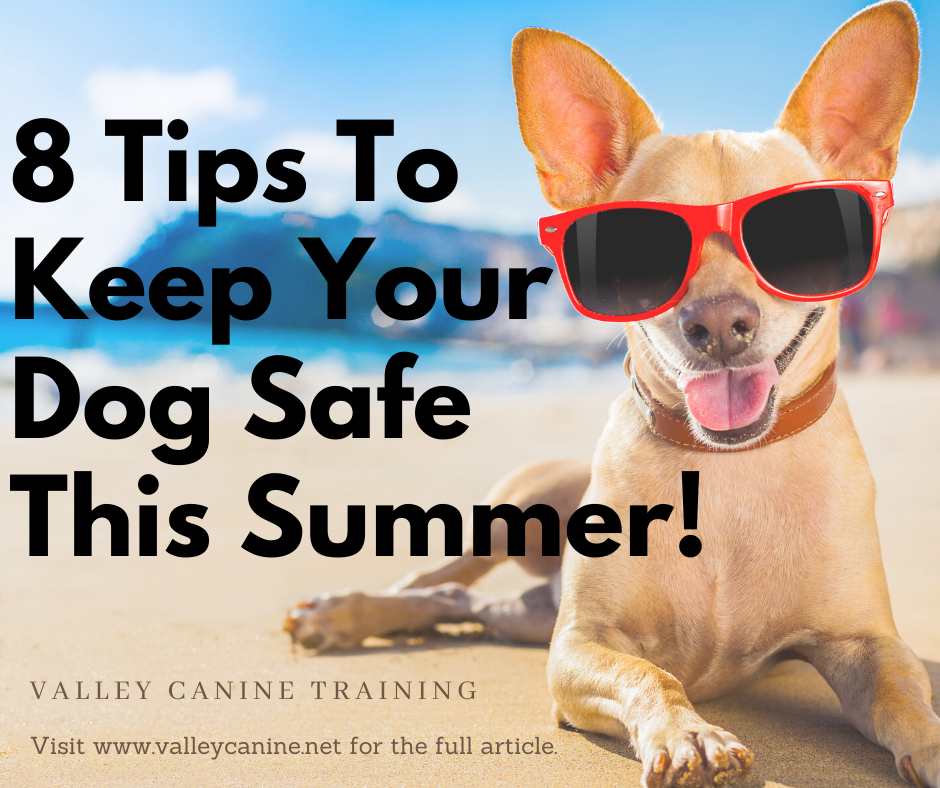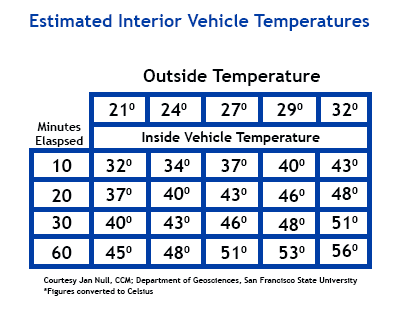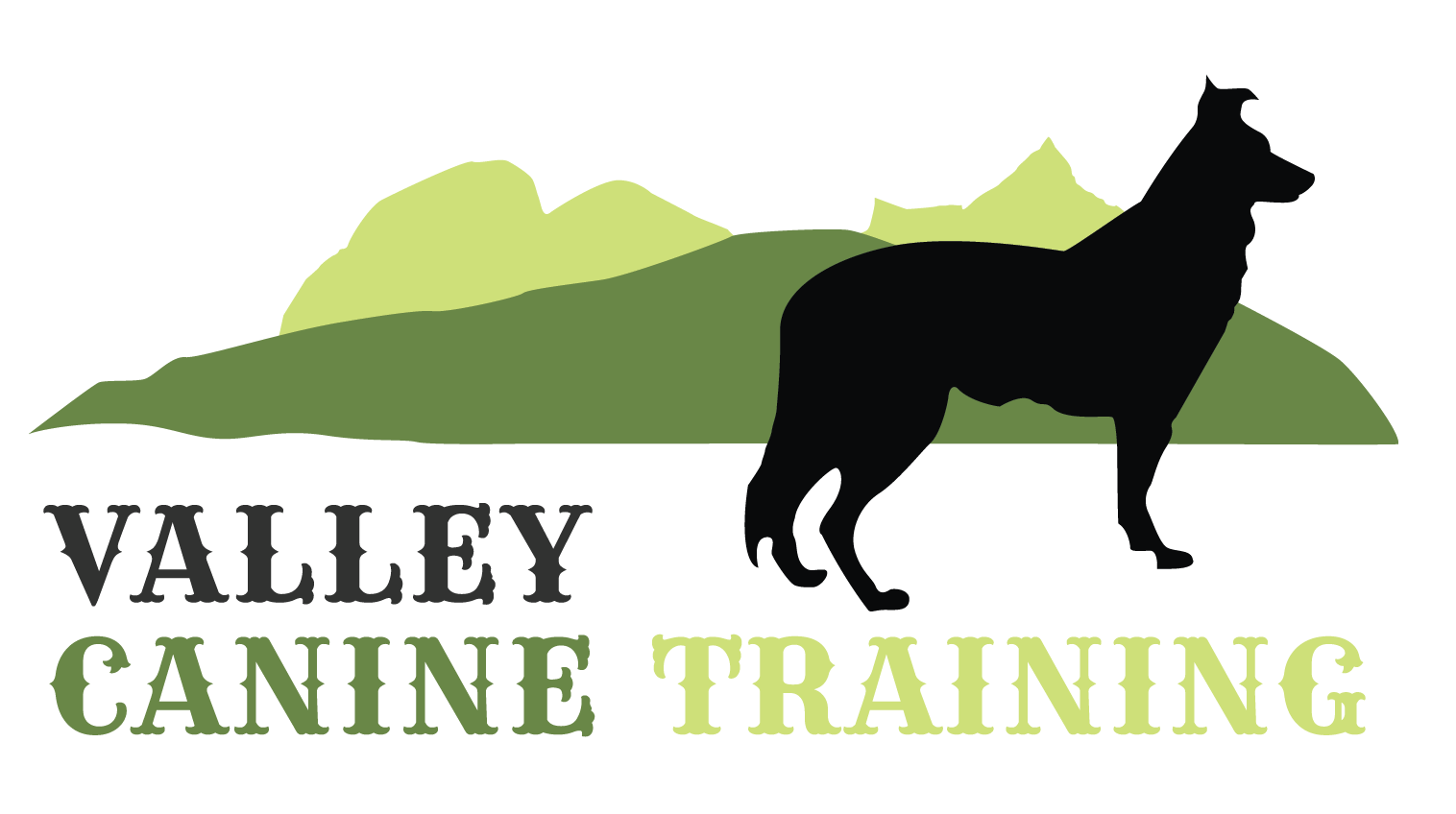
Today I am going to cover 8 VERY important tips on how to keep your dog safe this summer.
- Shade + Water + Dog Pool
- Signs of Heat Stroke
- Car
- Sunscreen
- No Shave
- When to walk? (hot pavement)
- Sweat through paws/anatomy of heat and dogs flat faced dogs and heat stroke/closer to ground
- Safety around water (life jackets, rivers, boating)
Summer is coming and I cannot wait! The heat, days at the lake, swimming, relaxing in the sun…. This sounds so wonderful for us humans, but when it comes to our dogs, heat, and sunshine can be DEADLY!

1. SHADE + WATER + DOG POOLS
If your dog enjoys spending summer days outside, laying on the porch, in the sun. You will need to make sure your outdoor space has shaded areas, and water available at all times.
Every dog is different, some like the sun and will lay out in it all day long, some love colder areas and prefer shade. Our dog Misty (who is a Weimaraner) loves the heat and will sunbath on our picnic table for hours. But our German Shepherd; Kita prefers to lay in the shade of the gazebo on our deck. Every dog is different, some love heat, some hate the heat, learn what your dog likes and make sure to monitor them especially if they love to sun tan.
During the summer months we also have a dog pool on our deck, Kita loves laying in the water and walking in it to cool herself down. We also have 2 buckets of water out on the deck for drinking. The pool and buckets are easy enough to fill with the hose every morning. We prefer and suggest having your dog pool on a deck or clean dry area to prevent muddy paws.
We also suggest putting water buckets in areas that are easy to fill up, and have more then 1 bucket/bowl of water available. This is because some dogs like to tip over their water bowl and lay in the water.
You will also need to provide a shaded area outdoors for your dog, so they can retreat from the heat if needed.
If your dog is the type of pup that likes to be outside during the summer months, make sure you have plenty of available shaded areas, lots of water, and a dog pool.
2. SIGNS OF HEAT STROKE (WHAT TO DO? PET FIRST AID)
Excessive panting and/or difficulty breathing – If your dog is panting excessively and does not stop panting once in a cool shaded area, then your dog may be experiencing heat exhaustion. Also, if your dog’s breathing is raspy, or they have a panicked look, they may be experiencing heat stroke/exhaustion.
Signs of Heat Stroke/Heat Exhaustion:
- Dehydration – (Signs of dehydration include: Excessive panting, Grey purple or blueish gums, Sunken eyes, Dry nose, Excessive licking or drooling (thick drool), Lack of urine)
- Fatigue or tiredness – If your dogs having a hard time getting off the floor, is bumping into furniture or walls, or seems wobbly (drunk walking) then this is a sign that they are dizzy or disorientated from heat exhaustion.
- Rapid Heat Rate – A faster then normal heat beat can be from exercise. but if your dog HAS TROUBLES slowing down their heart rate after exercising in the HEAT, this may be a sign of heat exhaustion or heat stroke. Or if your dogs’ pulse is faster then normal without doing any exercise this can be a sign of heat stroke.
- Fever – A body temp of more then 103 degrees is a sure sign of a fever and/or heat stroke or heat exhaustion.
- Muscle Tremors – If your dog is shaking (as if they are cold) but the temperature outside is warm or hot then this is a sure sign of heat stroke and we highly recommend rushing to the vet asap, because this can turn into a seizure or stroke.
- Diarrhea and Vomiting – If your dog throws up or is dry heaving for no reason or if they have diarrhea or bloody stool, this is a sign of heat exhaustion/heat stroke.
- Seizure – (often is a from a combination of the signs above)
If your dog is showing any of these symptoms, we suggest calling or visiting your vet asap!
3. WHY VEHICLES ARE SOOO BAD
The reason why it is SOOO dangerous to leave your pet in the car is because of how fast vehicles heat up!
Even on a day where it is “Only” 15 degrees outside, if you park in a sunny area, within 10 minutes your car can heat up to 26 degrees Celsius! Imagine your car is like a greenhouse, because it is.
Here is a chart on how fast your vehicle will heat up:

If it is over 15 degrees Celsius, we recommend leaving your dog at home. Once your dog’s internal temperature reaches 103 degrees Fahrenheit or 39.4 degrees Celsius, it means that they are experiencing heat exhaustion. Dogs cannot regulate and cool themselves down as humans can. We recommend keeping your dog home during the summer months, where they will be safe with water and shade.
If you see a dog that is locked in a hot car, first access the dog’s appearance and body language. Record the license plate of the vehicle. and then call the authorities. (SPCA and the police). You can also ask the store to announce the license plate of the vehicle.
Did you know? the darker in color the exterior of your car is, the faster it will heat up.

4. SUNSCREEN FOR YOUR DOG?
Yes, your dog can get sun burnt, just like humans. Especially if your dog has short hair or no hair. Sunscreen helps protect your dog from painful sunburns and the problems that can arise from your dog getting sunburnt repeatedly.
Make sure you purchase and use a sunscreen that is specifically for dogs. The sunscreen SHOULD NOT CONTAIN zinc oxide or PABA (para-aminobenzoic acid), this is because these ingredients are toxic to dogs if they ingest it by licking.
We recommend using a sunscreen that is not scented, and has an SPF of 30 or higher, also something that is waterproof if your dog loves to swim. If your dog has bald spot, such as on their belly, you can apply sunscreen to that area to keep it protected. If you dog has very short hair, we recommend applying sunscreen all over your dogs’ body.
There are also lots of natural sunscreens that are great for your dog too. For more info about sunscreen refer to the references section below.
5. HAIR HELPS
Dogs hair is like insulation, it traps air and keeps your dog cool in the summer and warm in the winter. A dog’s hair helps regulate their external and internal temperature. This is why it is better to leave the hair and not shave you dog “to cool them down”!
If your dog has a double coat, shaving them will actually ruin their coat and their hair will never grow back again properly. If you need to “trim” your dog’s hair that is fine. Some dog’s hair gets very long on their back end/back of their legs and around their paws, and under their belly. You can give them a bit of a trim to keep them clean but don’t over do it.
Trimming their paw hair can actually help cool them down as well. Dogs do not cool down like a human does by sweating, they pant to cool themself down. They mostly sweat through their paws, that’s why having a dog pool is a great option for your dog during the summer months.

6. BEST TIME TO WALK YOUR PUP (HOT PAVEMENT)
Walking your dog at 2pm in the afternoon can not only put them at risk for heat stroke and dehydration, it can also burn their paws!
Test the pavement yourself first. Place the back of your hand on the hot pavement, hold your hand they’re for 7 full seconds, if it feels too hot or is burning your hand then wait to walk your dog, or go take them to the lake or river instead.
If the temperature outside is 25 degrees Celsius then the asphalt can be up to 55 degrees Celsius! If your dog’s paws are exposed to this temperature, they can experience skin damage or burns within 5 minutes of walking.
If the temperature outside is 30-degree Celsius then the asphalt can be up to 57 degrees Celsius! This is hot enough to fry an egg within 5 minutes!
During the hot summer months, we highly recommend walking your dog in the early morning or the evening once the sun has gone down. We still recommend checking the pavement yourself with your hand before each walk. The alternative would be walking your dog on grass or taking them somewhere to swim.
7. HOW DO DOGS SWEAT? ANATOMY OF DOGS. WHY FLAT FACED DOGS FIND SUMMER SO MUCH HARDER?
Dogs sweat through panting, the water in their lungs, nose and tongue help cool them down. Excessive panting can cause dehydration though. Panting lowers the dog’s internal temperature, and in turn cools them down. Dogs also sweat only from their paws, but often it is not enough alone to cool them down.
To cool your dog down, water is key! When your dog pants, they exhale a lot of water/moisture, they need water to stay hydrated and replenish the water they have lost during panting, they also need water to help cool their paws which helps accelerate their cooling process.
Flat-faced dogs (Brachycephalic dogs) such as French bulldogs, English bulldogs, Boston terriers, pugs, Cavalier King Charles spaniels, Shih Tzus, and boxers. All have a hard time with heat and often overheat very easily. Brachycephalic obstructive airway syndrome is very common in these breeds and results in breathing issues and overheating issues. Their short muzzles, cause a restriction of air and airflow, which is a dog’s main way of cooling down and regulating internal temperatures. This limited airflow can cause labored breathing which in turn can cause strain on their heart as well. People who own flat-faced dogs should limit heat exposure and be very careful with exercising their dogs during the summertime.
8. SAFETY AROUND WATER, RIVERS, BOATING AND LIFE JACKETS
Safety around water is one of the number one thing we keep in mind during our dog hikes. Especially during the spring when the rivers are super high and powerful, from the snow run off high up in the mountains. We avoid going to the river during flooding/high season and we recommend that you do too.
If you plan on going to the lake, make sure to teach your dog to swim! Just like kids’ dogs also have to learn how to swim properly. At first most puppies will try to slap the water with their front paws, this is a great start to swimming but always be cautious and make sure to watch your dog. If you feel more comfortable going out into the lake with your dog, that would be best, and would help them learn faster as well.
If your dog is struggling with swimming, don’t force them or push them to go further out then they are comfortable with. Let them take it at their own pace. You can encourage swimming by throwing a ball for them, but don’t throw it to far, we suggest throwing just past where they can’t touch the bottom.
Like with everything, practice makes perfect, the more opportunities your dog has to swim at the lake the better and more confident they will become.
Boating is another topic that is super important to cover, because we are in the Okanagan valley, swimming and boating is a huge part of most peoples summers around here. If and when you have your dog in a boat, we recommend they have a life jacket on 100% of the time! This not only will save their life if they fall out of the boat, it also will make it way easier for you to pull them out of the lake if they do fall in.
Have you ever tried to pull your dog out of the water into a boat without them wearing a life jacket? I have and its nearly impossible especially if you have a big dog, it may take all of your effort and strength to pull them out. The life jacket makes it super easy to get big dogs out of the water back onto your boat, and in turn, can save your dog’s life if they accidentally fall out of the boat or jump out unexpectedly.

We hope these 8 tips helped you feel more prepared to protect your dog this summer. If you have any other Summer Tips for us you can contact us at www.valleycanine.net or on Facebook and Instagram @valleycaninetraining
